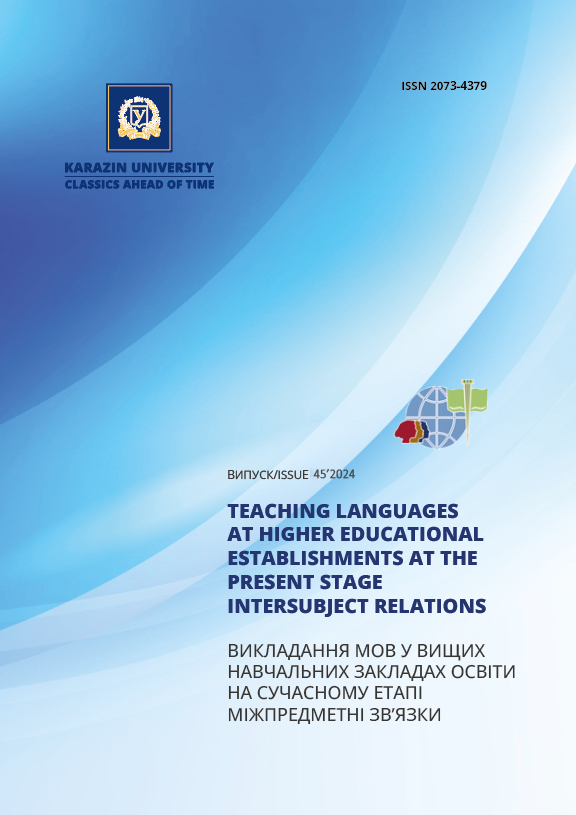Pedagogical grammar as a frame concept for research in the field of foreign language teaching methods. Part 17. Linguistic and pedagogical grammar
Abstract
The article deals with the correlation between linguistic (LG) and pedagogical (PG) grammars. The author considers LG as a set of data from all existing linguistic theories, and PG as information about the conditions and ways of performing grammatical actions in the process of their acquisition in the classroom. Analysing this general problem, the author outlines the range of questions that need to be answered in the course of his study. Is there a single theory of LG that can independently provide a basis for designing an adequate PG? What is the relationship between the amount and content of LG and PG information? Does the amount and type of PG depend on specific learning objectives and conditions? What are the best ways of presenting PG information for its effective use in the learning process? What factors influence the choice of presentation method? Should the structure of the PG reflect the structure of the LG? What factors influence the order in which grammatical phenomena are introduced in the process of acquiring the relevant grammatical actions in the classroom, and what determines the way in which such phenomena are grouped into organisational units of the course material (topics, units, etc.)? Having outlined the scope of these questions, in this paper the author analyses the potential of several LG models: traditional, structural, transformational and case grammar. In the authorʼs view, the traditional model of grammar, which has been used in language teaching for centuries, remains a good source of information about the surface structure of a language, but it may lack data about its functional aspect. Although structural grammar, which served as the basis for the audiolingual method, has been much criticised, the failures of this method are more related to the inadequacy of the underlying psychological model. While the potential of the transformational and case models of grammar is assessed positively, the paper considers them too complex to be used in the classroom without additional processing. Based on the conclusions, the author outlines the prospects for further research.
Downloads
References
Chernovaty, L. (1999). Osnovy teorii pedahohichnoi hramatyky inozemnoi movy [The Basics of the Foreign Language Pedagogical Grammar Theory]. Doctor of Sciences thesis extended abstract. Kharkiv: V.N. Karazin Kharkiv National University [in Ukrainian].
Allen, J., Widdowson, H.G. (1975). Grammar and language teaching. The Edinburgh Course in Applied Linguistics. Vol. 2. London: Oxford Univ. Press, pp. 45-97.
Anderson, J.M. (2005). Structuralism and autonomy: from Saussure to Chomsky. Historiographia Linguistica. 32(1), pp. 117-148. DOI: https://doi.org/10.1075/hl.32.2.06and
Brown, R., Fraser, C. (1963). The acquisition of syntax. Verbal behavior and learning: problems and processes. C. Coffer, B. Musgrave (Eds.). New York: McGrow Hill, pp. 158-201.
Celce-Murcia, M., Larsen-Freeman, D. (1983). The Grammar Book. An ESL/EFL Teacher’s Course. Rowley, Mass.: Newbury House.
Chernovaty, L.M. (2016-2024). Pedagogical grammar as the framework of research in teaching foreign languages. Parts 1-16. Teaching Languages at higher educational establishments at the present stage. Intersubject relations. Issues 29-44. DOI: https://doi.org/10.26565/2073-4379-2024-44-13
Chomsky, N. (1965). Aspects of the Theory of Syntax. Cambridge, Mass.: MIT Press.
Chomsky, N. (1957). Syntactic Structures. Hague: Mouton.
Chomsky, N. (1982). Some Concepts and Consequences of the Theory of Government and Binding. Cambridge, Mass.: MIT Press.
Daulay, S.H., Dalimunte, M., Ningrum, D.W. (2021). The Importance of Linguistics for Teachers in English Language Teaching. English Franca: Academic Journal of English Language and Education. 5, pp. 339-348. DOI: https://doi.org/10.29240/ef.v5i2.2721
Fillmore, C. (1968). The case for case. Universals in Linguistic Theory. E. Bach, R. Harms (Eds.). New York: Holt, Reinhart and Winston, pp. 22-54.
Halliday, M. (1975). Learning How to Mean: Explorations in the Development of Language. London: Edward Arnold.
Maratsos, M., Chalkley, M.A. (1980). The internal language of children’s syntax: the ontogenesis and representation of syntactic categories. Children’s Language. Vol. 2. K.E. Nelson (Ed.). New York: Gardner Press, pp. 127-214.
McDonough, S. (2002). Applied Linguistics in Language Education. London: Routledge. DOI: https://doi.org/10.4324/9781315097169
Schenck, A., Baldwin, M. (2019). Is Form-Focused Instruction Really a Waste of Time? A Review of Past Mistakes and Future Possibilities through the Analysis of Input Enhancement. Journal of Linguistics and Language Teaching. 10(1), pp. 11-29.
Schmale, G. (2024). Comment acquérir une compétence d’oral spontané en situation d’apprentissage institutionnalisée. Journal of Linguistics and Language Teaching. 15(1), pp. 33-49.
Shanavas, P.S. (2023). Role of Linguistics in Language Teaching. Journal of the Faculty of Education. 11(17), pp. 18-26. DOI: https://doi.org/10.60037/edu.v1i17.1192
Wilkins, D.A. (1972). Linguistics in Language Teaching. Cambridge, Mass.: MIT Press.
Xing, H. (2018). Language Teaching Research Based on Applied Linguistics Theory. Open Journal of Social Sciences. 6, pp. 340-348. DOI: 10.4236/jss.2018.612029.

